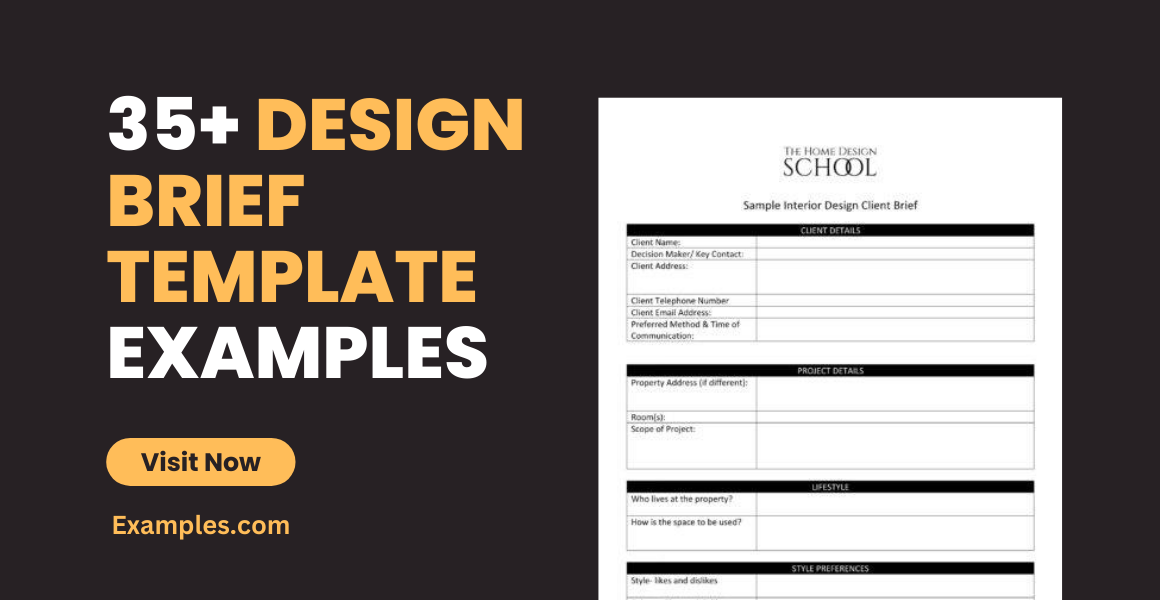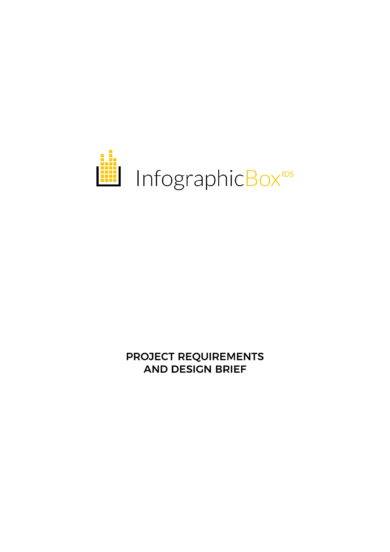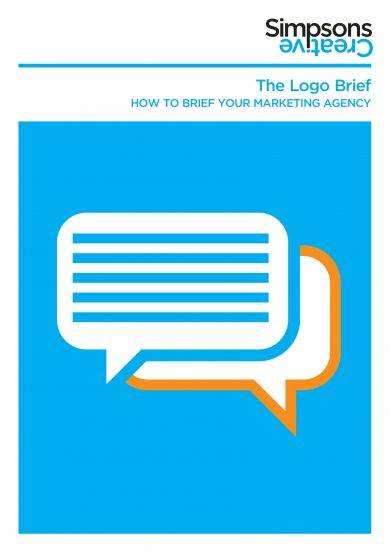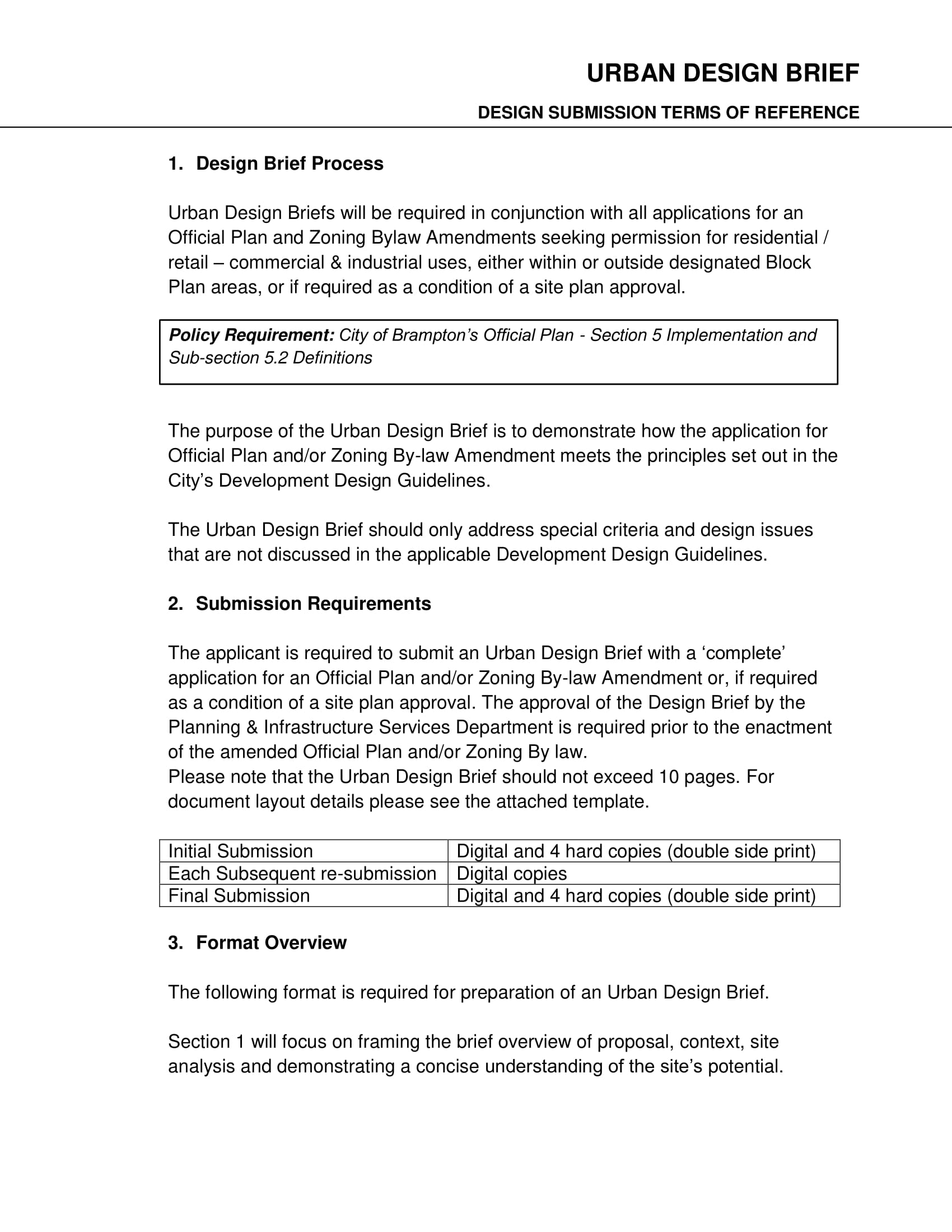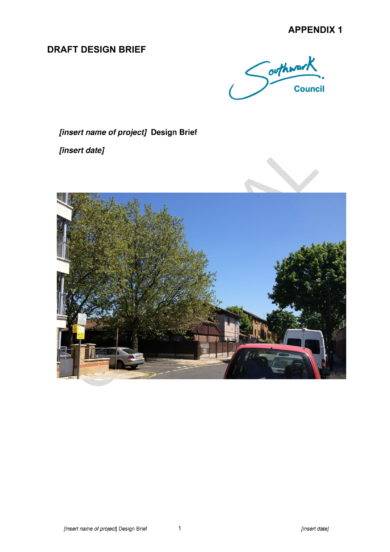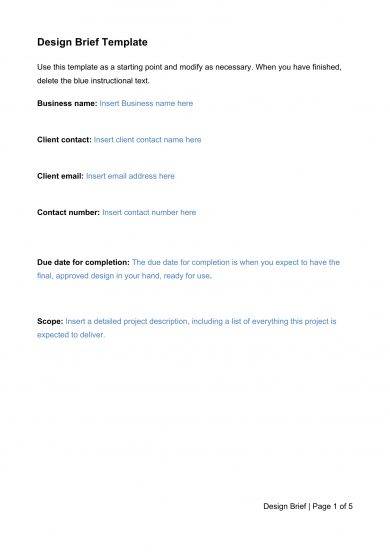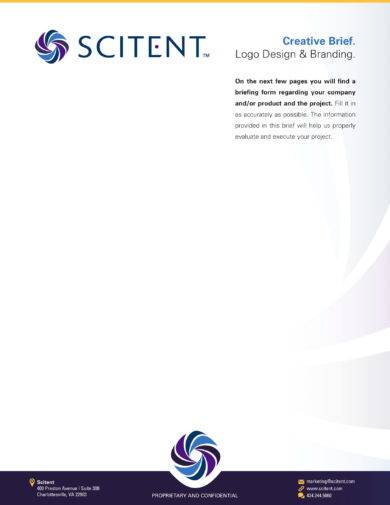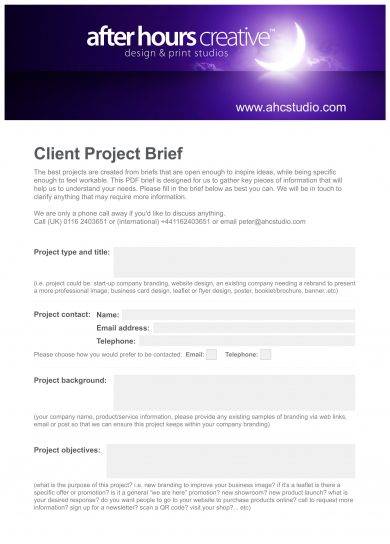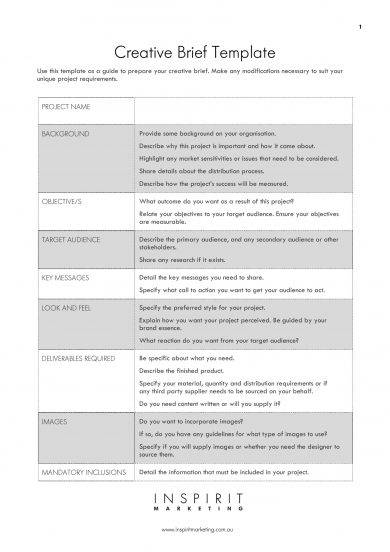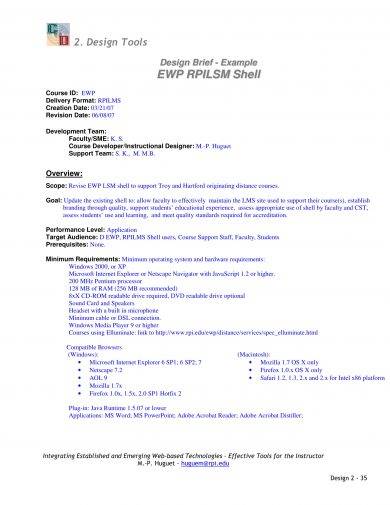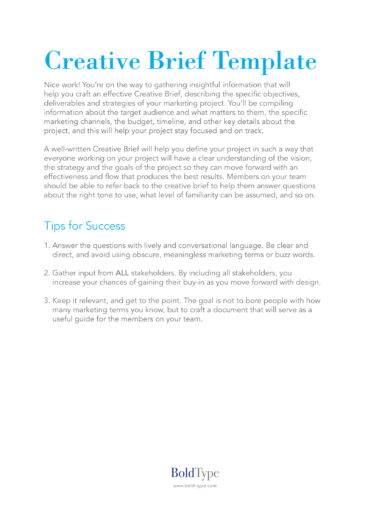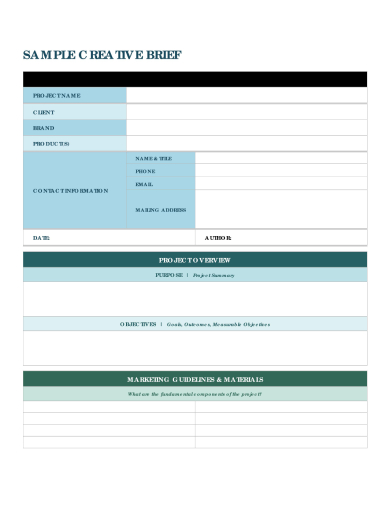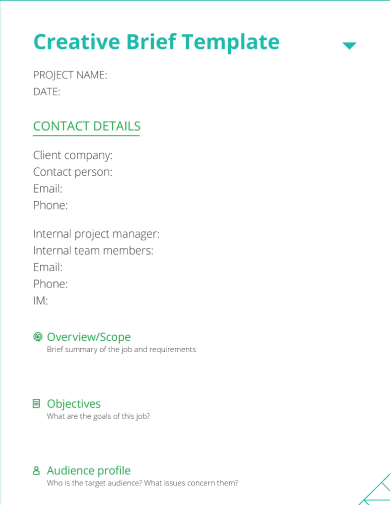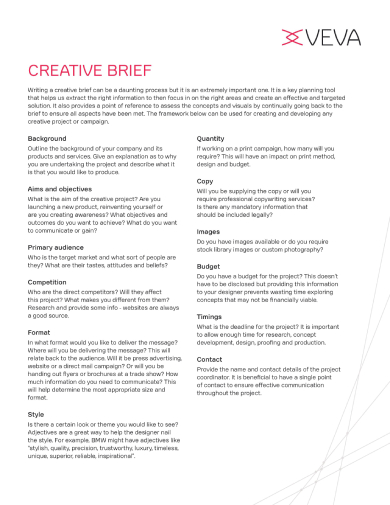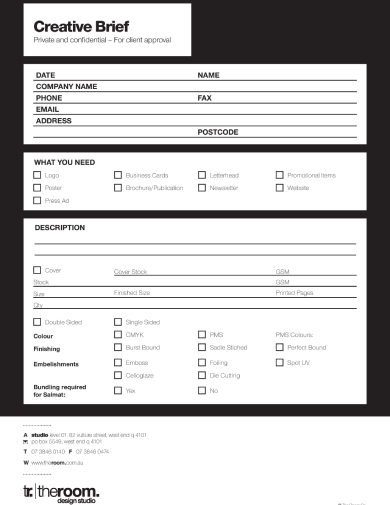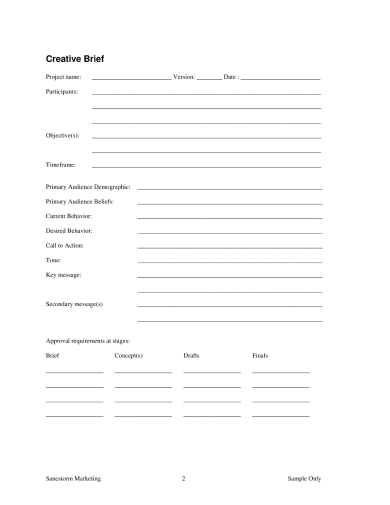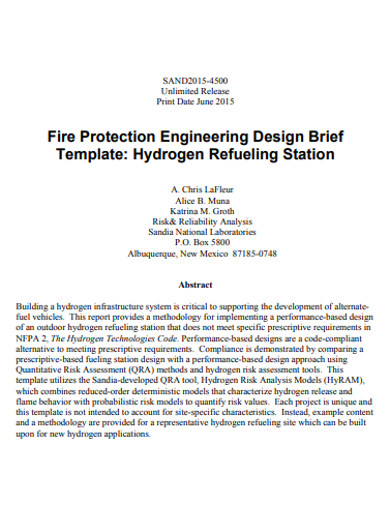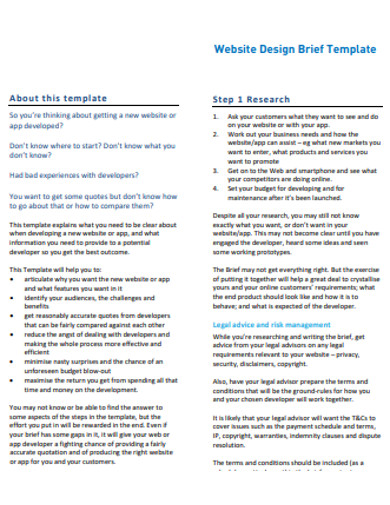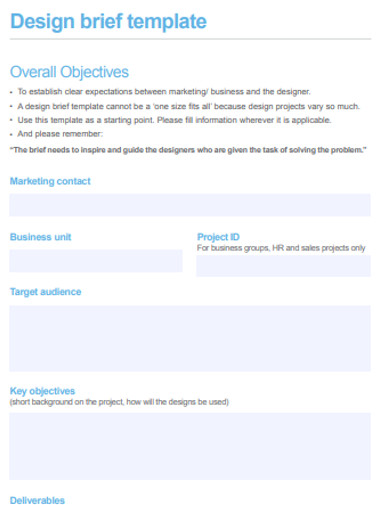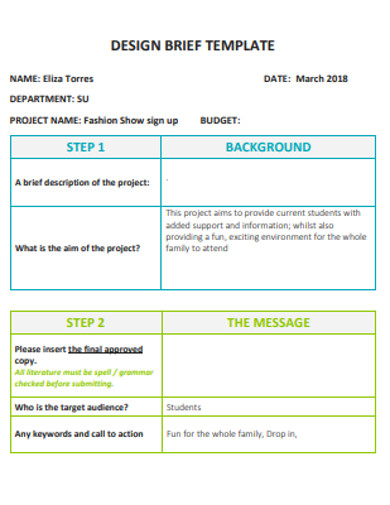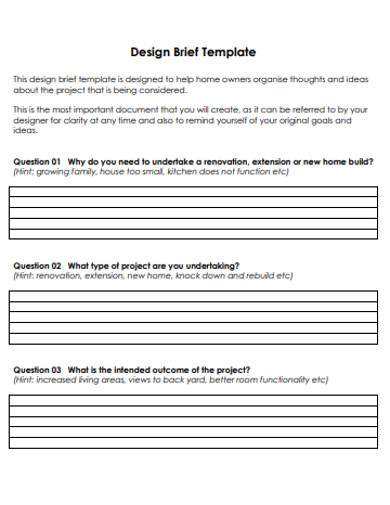25+ Design Brief Examples to Download
Examples logoWhenever there is a design project that is required to be conceptualized, planned, or presented, a design brief is always deemed necessary. This document serves as the consultation paper that integrates the minds of the client and the designer or creative team to come up with an agreed initial plan to achieve the desired outcome. If you are one of the thousands that find brief writing difficult, here is an article that would guide you throughout your writing process.
Creating a design brief can be time-consuming especially when it comes to the drafting process, and to be honest, it could be complex at first. It is consisted of various parts and needs to be accurate. To give you a clearer illustration of what this document is all about, here are some downloadable brief templates and examples that you could check on.
Design Brief Template Example
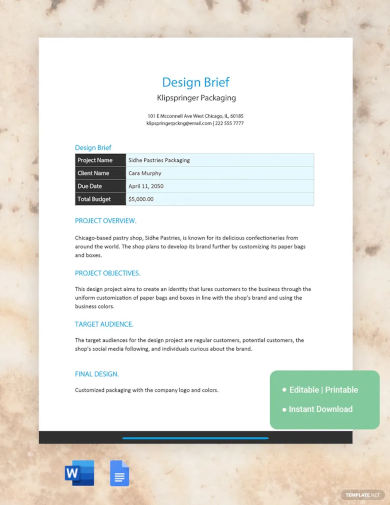
UI Design Brief Template Example
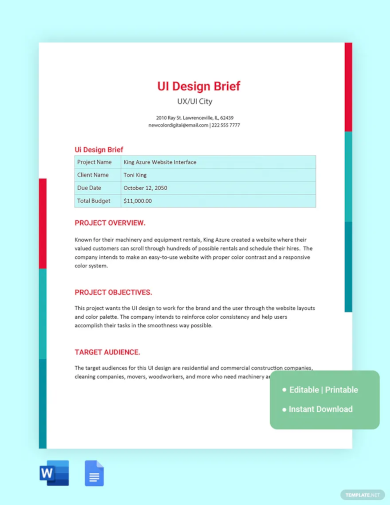
UX Design Brief Template Example
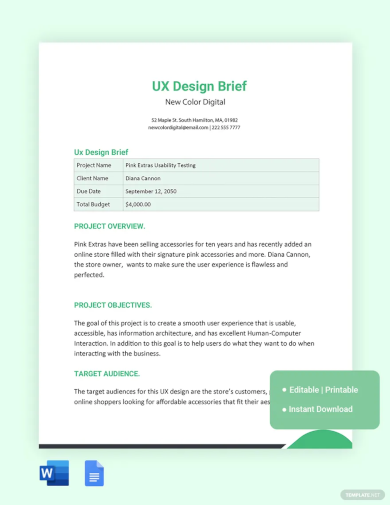
Building Design Brief Template Example
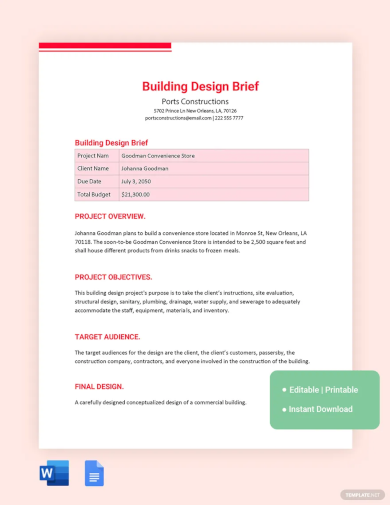
Simple Design Brief Template Example
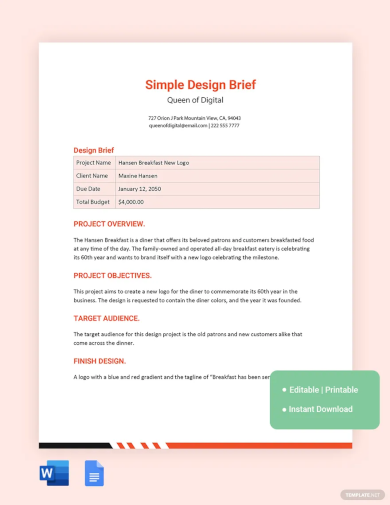
Logo Design Brief Template Example

Interior Design Brief Template

Web Design Brief Template Example
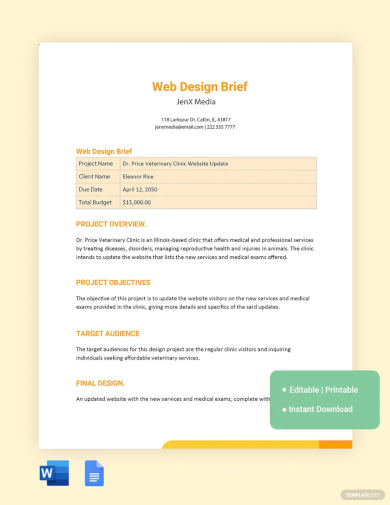
Graphic Design Brief Template Example
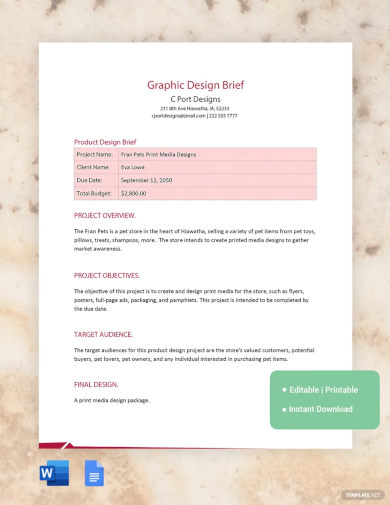
Product Design Brief Template Example
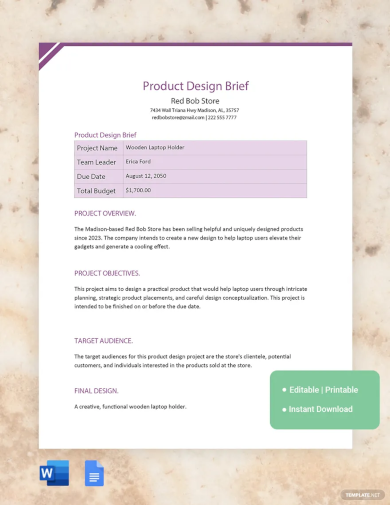
Video Production Design Brief Template Example
Project Requirements and Design Brief Template Example
Logo Design Brief Template Example
Interior Design Client Brief Template Example
What Is a Design Brief?
A design brief is one of the project brief examples that are specifically made and used for creative or design-related processes. Though referred to as a general term, a design brief can actually be beneficial in different processes, ways, and activities. For you to be more knowledgeable about the nature of a design brief and its various usages, here are some ways on how a design brief can be defined:
- A design brief defines the scope of the design project. Hence, this document must contain the most important factors and elements that must be considered by the design team and the clients as well. The aesthetic of the project is commonly discussed in this document so that it will be easier to finalize the functions of the design team, the demands and requirements of the client, as well as the budget, time, and other items that must be considered for the transaction to push through. You may also see policy brief templates and examples.
- A design brief serves as an introduction of the design project. It provides the instructions that are essential to be followed by the design team as well as the obligations of the clients especially when it comes to the identification of the design project particulars that they would like to see once the transaction is done. Design briefs can be used in a variety of industries and fields ranging from interior and industrial design up to architecture and engineering. You may also like free creative brief templates and examples.
- A design brief is used as an initial guide. Hence, the content of this document can change as the design project progresses and develops. With the help of a design brief, it will be easier for the design team to have effective decisions about the changes and project shifts that they would like to implement. This only proves that design briefs are essential documents used within the evolution of the project. You may also check out summary writing examples and samples.
Creative Brief for Marketing and Design Framework Template Example
Urban Design Brief Template Example
Design Brief Draft Template Example
Website Design Brief Template Example
Design Brief Template Example
Importance of a Design Brief
A design brief is created by a design team or a design expert to make sure that the project where it will be used can be guided accordingly. This is very important particularly in tracking the resource usage and remaining budget of the project. Aside from this, listed below are more reasons why it is important for design briefs to be created in every design-related project or undertaking. You may also see how to write a summary.
- Developing a design brief helps in outlining the expected deliverable of the project. This means that you need to make sure that the design brief that you will create contains a descriptive list of the products and other raw materials that are essential to be acquired for the project to be completed. You may also like meeting summary examples.
- Creating a design brief can be useful to the design team and all the stakeholders of the project as this document can be used as a reference once the design has already been presented or executed. Through a design brief, the clients and the design team can assess and evaluate whether the expected deliverable has been implemented and given accurately. You may also check out movie summary examples.
- Making a design brief can present the rights of each parties involved in the transaction. A design brief, like marketing brief examples, is made to disseminate obligations and accountability in a formal manner. Through a design brief, the clients can have a realistic and measurable perception of what the design team can provide them with. On the other hand, the design team can also set the quality standards when it comes to their performance so that they can give what the client needs and expects in a timely manner.
Creative Brief, Logo Design, and Branding Example
Creative Design Client Project Brief Example
Project Creative and Design Brief Template Example
What Should Be in a Design Brief?
Just like any creative brief templates and examples, a design brief must be comprehensive and well-organized for people who will review the document to have an easy time understanding the discussion present in it. More so, the completion of the items that are expected to be seen in a design brief can affect the way clients perceive the transaction and the ability of the design team to truly function based on set standards. A few of the most important pieces of information that you can include in a design brief are as follows:
- The title of the project where the design brief will be used
- The nature of the design project and the ways on how the brief can be of help in its organized execution. You may also see summary examples.
- The general statement or description of the problems that must be faced within the design project
- The design project risks that both the clients and the design team must prepare for
- The summary of the project and its design requirements
- The constraints of the design project which includes the discussion about the project budget, the timeline to follow, and the particular design requirements of the project. You may also like research summary examples.
- The benefits of tracking project and design updates with the help of the design brief and other organizational and presentation tools
- The solution/s to the issues and concerns of the clients in terms of the attainability of the designs that must be executed
- The sketches that can visually showcase the project areas, phases, and specifications
- The goals that must be accomplished by the design team at a given time period. You may also check out dos and don’ts in writing a chapter summary.
- The due dates that must be looked into by all stakeholders to ensure that the project finished on time
- The evaluation of the initial design plan for the project
- The conclusion for the transaction and other additional information that can be of help to improve and further develop not only the design brief but the project as well.
The Best Way to Write the Most Compelling Creative Brief
A creative brief is a document that elaborates the holistic picture of a design-related project. This provides a comprehensible blueprint for the designers and creative team in order for them to have a unified idea about the project that needs to be done.
Assuming that you have a wonderful project idea that would require a group of people to work on or you want to get your community park done, a creative brief is a need for those jobs. Whether it is a big or small project, it is always awesome to give it your best shot. In this section, we will discuss the best way to compose your most compelling creative brief.
1. Provide a company description.
Whether your company is famous or not, it is important to include a company description in your creative brief. Every company has its own image in the minds of people. They have their own brands that also make a high impact on their productivity. In making your creative brief, you need to give the artists or designers necessary information on what your company is all about, products or services offered, mission, vision, etc. You may include contact details, too.
2. Give a brief yet complete project summary
Just like the company description, the designers will also be needing a summary of your project. It does not need to be lengthy, but it should be precise and complete. In here, you must show to the artists what the project really is and its significant purpose on your company. You must also provide an understandable project description.
3. State the project’s target audience or users
Expectedly, a project can either be used or only for aesthetics. No matter what your project is, it is important to describe your target audience or users. Aside from answering the question of what that specific project all about, it is also important to take note of who are the people that are going to benefit the project the most. With these, the designers will have a better understanding of what are the designs appropriate for the demographics of your target audience.
4. Mention the specific project budget.
It is undeniable that the budget has a great role to play in realizing the project. When you already have a set budget, you can state it in your creative brief. With this, your designer could have an idea of whether the money and resources provided are enough to sustain the project. You can also discuss it with them to have a reasonable estimation regarding the budget.
5. Specify your objective.
Your objective and strategy might be the most essential portions of your creative brief. These parts are very similar to the summary; however, you need to focus more on the “why” and “how” than “what.” These state the aim of your project and explain how you want it to be done. Thus, as much as possible, give a specific outline regarding these areas.
There are a lot of things to be considered in writing your own creative brief. Making this could be complex, and ironically, it is intended to be as understandable as possible. If you are doubtful with your writing skills, you may follow these guidelines to improve it.
Design Brief Template and Guide Example
Design Brief Template and Example
Creative Brief for Project Design Template Example
How to make a creative brief for a website?
Let’s assume that you want to create a website, but you want innovative professionals to work on it. How would you approach them? How could they help you with their service to give you maximum satisfaction? If you are asking both of these questions, it’s time for you to create your own creative brief. The following are the steps in making an easy-to-understand brief that would provide designers the exact illustration of your dream website.
1. Construct your introduction wisely.
In contrast to its name, this document does not need creative effects in writing. Consequently, this needs to be straightforward. In writing your introduction, instead of capturing their attention, provide them with the necessary details about your project. You may consider putting these pieces of information:
- company description
- products and/or services that your company is selling
- size of business or company
- the scope of the business (e.g. global, local)
- duration of the business reign
- adjectives that can describe your company
2. Compare the old website v.s. new website.
Supposing that you already have a made website, provide the designers with a brief description of your old website. This is pretty practical because it gives them a rational basis on what things should they improve on. In this part, you may provide a paragraph that states:
- positive aspects of your old website
- negative aspects of your old website
- its duration since its first launch
- levels of traffic on your old website
- traffic percentage from handy gadgets such as tablets and phones
- based country
Moreover, kindly state the desired features of your new website. In here, you must mention the changes you wanted to be done. In doing such, you must be specific such as the color of the backgrounds, the font styles, font sizes, alignment, etc. Also, you can state if you want to add some features such as buttons or links.
3. Talk about the budget.
In outlining your budget, you must also be precise and detailed. This is important because, with this, you can get responses from different agencies and helps you in the decision-making of which designer should you choose. Moreover, by stating your budget, you can communicate with different artists to obtain realistic anticipation of the wanted outcome. In this portion, specify the following:
- budget for the website’s design and enhancement
- presence or absence of the budget for ongoing support and the maintenance
- the digital marketing budget for the next 6 months
4. Mention some samples and records for inspiration.
To give your designer a more specific illustration of what your dream website looks like, provide them a few numbers of inspiring websites. Also, state the specific features of each of these websites that you wish to apply to your new one. Moreover, you can also include designs of your promotional tools such as brochures, marketing literature or annual reports of your company to give the designers an in-depth overview of your company.
5. Don’t forget the content.
While focusing on getting a fresher look for your website, it is also important to consider your content. Needless to say, the content of your website also greatly matters, and it is also critical to give the designers accurate information regarding this aspect. If you already have an old website, you must state whether or not you want to alter its content. On the other side of the coin, if you want a brand new website, it is important to consider if you also want them to create the content or is it you who will provide it. Furthermore, mention what particular content your site provides.
6. Consider other important details.
In your middle section, you can expound on some important details as well which include:
- the technical matters of your website
- maintenance of the website
- promotional media (online and offline)
- digital marketing of the website
7. Summarize it on conclusion.
In writing your conclusion, you may wrap everything up and provide a brief summary regarding the website you want to obtain. In this section, you can also add a call to action and the contact methods that designers could contact you. Moreover, in mentioning your timescales, you need to keep it lifelike. Don’t give the designers too long or short deadlines for making the website that you want.
There are a lot of things that you need to consider in writing a creative brief for your own website. However, there’s nothing to be anxious about since this guideline could serve as your stepping stones to find the perfect design that suits your style.
Tips When Making a Design Brief
Compared to client brief examples, design briefs must also have the ability to gather the recommendations and ideas of the client. A design brief must have the ability to present a design concept that can supply the needs of a particular design project within the range of the expected quality of all stakeholders. Some useful tips that can help you create an effective design brief are listed below.
- Present the overall design style, aesthetic, or look that you would like to implement, which should also be based on the specifications of your current clients.
- Know the audience that your design brief will target. This will help you put together relevant, necessary, and helpful design information. You may also see the interview summary examples.
- Review the draft of the design brief before sending it to your clients. Make sure that the document is free from grammatical and formatting errors.
- Use outlines and general checklists when it comes to organizing the content of this document. Moreover, ensure that the details in the document are updated and accurate.
Planning to create a design brief? Remember that this document should have a well-defined list of the processes that will be executed within a given timeline for the objective and vision of the project to be realized. Do not forget to use references like templates and examples so you can create an outstanding design brief. You may also like resume summary examples.


